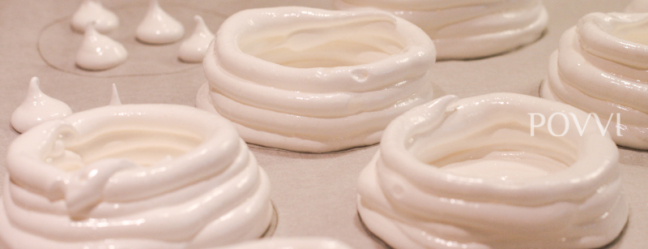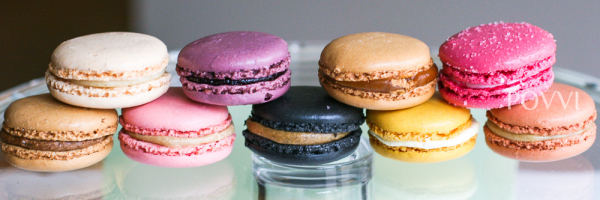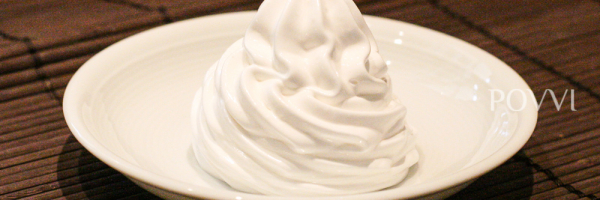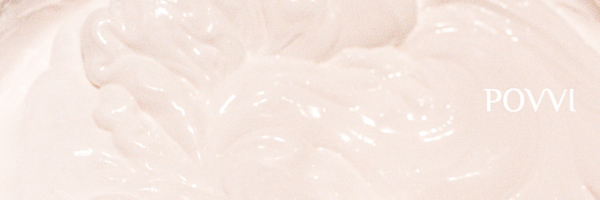Preparations of meringue
To make meringue (or foam) there are several manuals. In response to questions on this recipe, I am once dived deeper. It seemed to be useful to think which one you want to use, before you start.
Making foam is primarily a precise chore. It is important that your ball and mixing hooks are perfectly clean. There should absolutely be no fat or water in the bowl or the mixing hooks. Nigella Lawson advises here to grease the bowl and mixing hooks always with some lemon juice. This seems to make sense and prevents all irregularities of your working tools. Meringue is often baked slowly. If you’re usually not that patient, it will be the best to put the oven as low as possible and to leave for 3-4 hours. Indeed, the idea is, that meringue is baking, but that it’ll dry out. That is the way you preserve the white color of the meringue.
To the foam you can add all kinds of flavors: almond flour to make macarons or instance ground hazelnuts to make a dacquoise. You can also bake them in many different forms. You can make pavlova or cookies, kisses and even foam layers for a cake. Also you can handle in meringue buttercream to make him particularly light or make of a frosting for your cake.
You can create foam in three different ways. Each method has it’s advantages and disadvantages and it is best to think before you decide what might be the best for your preparation.
French meringue
This foam is suitable for the most simple constructions. You can make well pavlova’s or meringues with it. The method used here, is the most simple. You beat the egg whites and then slowly add the sugar while continuing to beat. The mixture transforms into a stiff and glossy foam. This method is one of the most used, because it’s so easy. French foam is less stable and it is important to add sugar really slowly. If you do not do so, in fact you’ll have to realize that sugar granules remain in your foam. Then you have instead of a soft, marshmallow-like inside suddenly some grainy cookie.
Italian meringue
Italian meringue is of difficulty between the French and the Swiss foam foam. It is often used to make fillings lighter or to make decorations. Instead of sugar ‘raw’ add to the egg withs, do first a syrup. You dissolve the sugar in some water and bring to the boil. Then you cook it to 128°C (when a drop of syrup in a glass of ice water drops, it must be a hard ball when you roll it between your fingers). Meanwhile, whisk the egg whites stiff. Then you pour the hot syrup in a thin stream to the protein while you mix on high (this is best done with two people or KitchenAid machine). Then continue beating until the mixture is cold. This method is used for example in the making of the frosting for chocolate cakes.
Swiss meringue
This is a very thick and stiff mixture which is well suited for spraying (for example, to decorate). Extensive forms The method used is one where you put the egg whites with the sugar in a bowl over a pan of simmering water. Then you beat 15 minutes with an electric mixer until you have a big bowl full of meringue and the foam is very stiff, white and shiny become. It is then immediately ready to be used in another recipe. The time it takes to make swiss foam is often shortened in recipes.
Copyright © 2015 The Presidency of Very Visual Information. All Rights Reserved












Leave a Reply